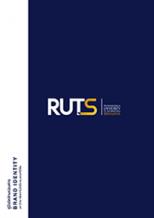Cultivating Seagrass for Conserving Dugongs Initiated by RMUTSV Trang
Mr. Prajuab Mokaratana, the director of Office of Marine and Costal Resources Conservation Region 6, in conjunction with Dr. Prasert Tongnunui and Dr. Apirak Songrak, from Rajamangala University of Technology Srivijaya, Trang campus, held the activity; planting seagrass at the seashore, Trang. The main aim was to support the Small and Micro Community Enterprise Fish Farming, Baan Phru Jood, Bohin sub-district, Sikao district, Trang, to be the center of planting seagrass seedlings. This center is as the first seagrass seedlings bank in Thailand initiated by Mr. Banjong Na-rue matee, the leader of the project, who raises the awareness in planting and rehabitating seagrass at the seashore of Trang.
Why seagrass is essential for dugongs?.. In fact, marine and coastal management nowadays is focused on the conservation of natural resource for properly utilizing and maintaining the remains for the next generation. Cultivating seagrass at Trang is the activity cooperating between government sectors, coastal communities, and external organizations. Many years ago, the conservationists found a big crisis of the extinction of dugongs in Thailand particularly in Trang. It was reported that the amount of dugongs found in Trang has continuously decreased. Several years ago, there were around 160 dugongs living in Trang sea, but 2-3 years later, it was just found about 120-130 dugongs there. Noticeably, the number of dugongs’ carcasses has been increasingly found every year. In the academia, if the death rate of dugongs has been found more than 7 carcasses each year, the dugongs might really extinct from Trang sea within 60 years. The conservation movement of dugongs is still restricted. This is because we can not directly access to them—they are not accustomed to human as elephants and pandas. Therefore, seagrass is selected as a medium to attract dugongs; if the seagrass extincts, dugongs will also.
Seagrass is very important for coastal ecosystems and food sources of dugongs.In the territorial seas of Thailand both Thai gulf and Andaman, there are 12 species of seagrass being found. It is named as its specific features. The first group is called acuminate or orbicular, such as Enhalus acoroides, Syringodium isoetifolium, Halodule uninervis, Halodule pinifolia, Ruppia maritime, Cymodocea rotundata, Cymodocea serrulata, and Thalassia hemprichii. The second group is Elliptic, such as Halophila ovalis, Halophila decipiens, Halophila minor, and Halophila beccarii.
Currently, the condition of seagrass in Thailand is found 104,686 rai; Thai gulf 38,736 rai, Andaman 65,950 rai. It is vastly found at Trang around 21,166 rai or in the ratio of 1:4 of seagrass in Thailand. However, the seagrass presently is gradually threaten and continuously waned. The major factor affected to this destruction is from human’s activities and the damage of mangroves and coral reefs. The survey about the current condition of seagrass covering more than 30 important sources in the Andaman coast found that 40% of seagrass is in a good condition, 30% in moderate and 30% encountering waned condition.
Over the past decades, the sea coasts have been destroyed for many purposes: country development, economy expanse, building construction, land reclamation, building a bridge, ocean mining, for instance. These activities will transport the sediments from the coasts and islands to the sea. Concerning careless fishery, it is also perceived as the big factor that can extremely damage seagrass, marine life as well as sea coast; for example, fishing by using trawler, push nets, and beach seines.
Besides, it is noted that long-extreme monsoon, typhoon or climate change, and global warming can cause to the degradation of seagrass. The destruction of disaster can be clearly seen from “Tsunami” hit the Andaman. It destroyed the seagrass more than 2,500 rai. Moreover, life cycle of seagrass might be destroyed if the temperature of sea water is higher. Particularly, the temperature and sun light is the main impact of reproduction of seagrass including the marine life who eat seagrass as their main food.
The activity of cultivating seagrass, chaining the harmony of locals, and raising the awareness, received the interest from the Management Unit Network and Costal Resources Conservation Management Section. The awareness of conservation seagrass is started from activity of cultivating seagrass by propagation technique in the group of Cymodocea rotundata. Because of the conservation movement, Rajamangala University of Technology Srivijaya, having efficient professors, has jointly developed planting technique and suggested reproduction technique by using seeds in order to reduce the damage of seagrass resources probably affected by propagation. Presently, this activity especially in Trang is becoming the main mission of Office of Marine and Coastal Resources Management, Trang. The activity is important and valuable for both humans and animals’ ways of life, natural resources, and environment which are in accordance with the mission of Academic Services of RMUTSV. This activity cannot be completed if there is without the cooperation from various sections.
Lastly, Rajamangala University of Technology Srivijaya, would like to invite interested person to join cultivating seagrass and release fish at Trang sea in order to conserve the remains natural resources for the next generations.
Translated by Jirayu Songkhro
Public Relations Officer, RMUTSV
